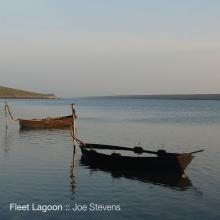The Fleet derives its name from the Saxon 'fleot', meaning shallow water.
The field recordings that make up this soundscape were recorded near to the village of Fleet that lies close to the lagoon of the same name. This area was made famous by the novel of smuggling by J. Meade Faulkner, "Moonfleet" published in 1898.
The Fleet connects to the sea via a narrow channel into Portland Harbour. Beyond the Fleet is the famous bank of Chesil Beach where treacherous currents and a strong undertow (you can hear some pounding of the waves onto the beach in the distance in some recordings).
Chesil Beach doesn’t only join Portland and Abbotsbury, it also divides. The massive bank of pebbles that arcs its way around the North Eastern edge of Lyme Bay has annexed a smaller body of water between itself and the mainland - the Fleet Lagoon.
Seawater can enter the Fleet by percolation through Chesil Beach under some tidal conditions. But the lagoon is also fed by fresh water run-off, streams and ditches along its 8-mile length.
The Fleet is an important area for wildlife, with a diverse range of animals, birds and plants. As such it is listed and protected under several national and international agreements, as well as being part of the World Heritage Jurassic Coast. The Fleet is probably most famous as the home of the Mute Swans (you can hear these swans feeding early on in the piece). While up to 5,000 Brent geese over-winter on the Fleet.
The Fleet remains a truly beautiful and peaceful place to walk and enjoy great scenery and an abundance of wildlife.
Joe Stevens

.jpg)
